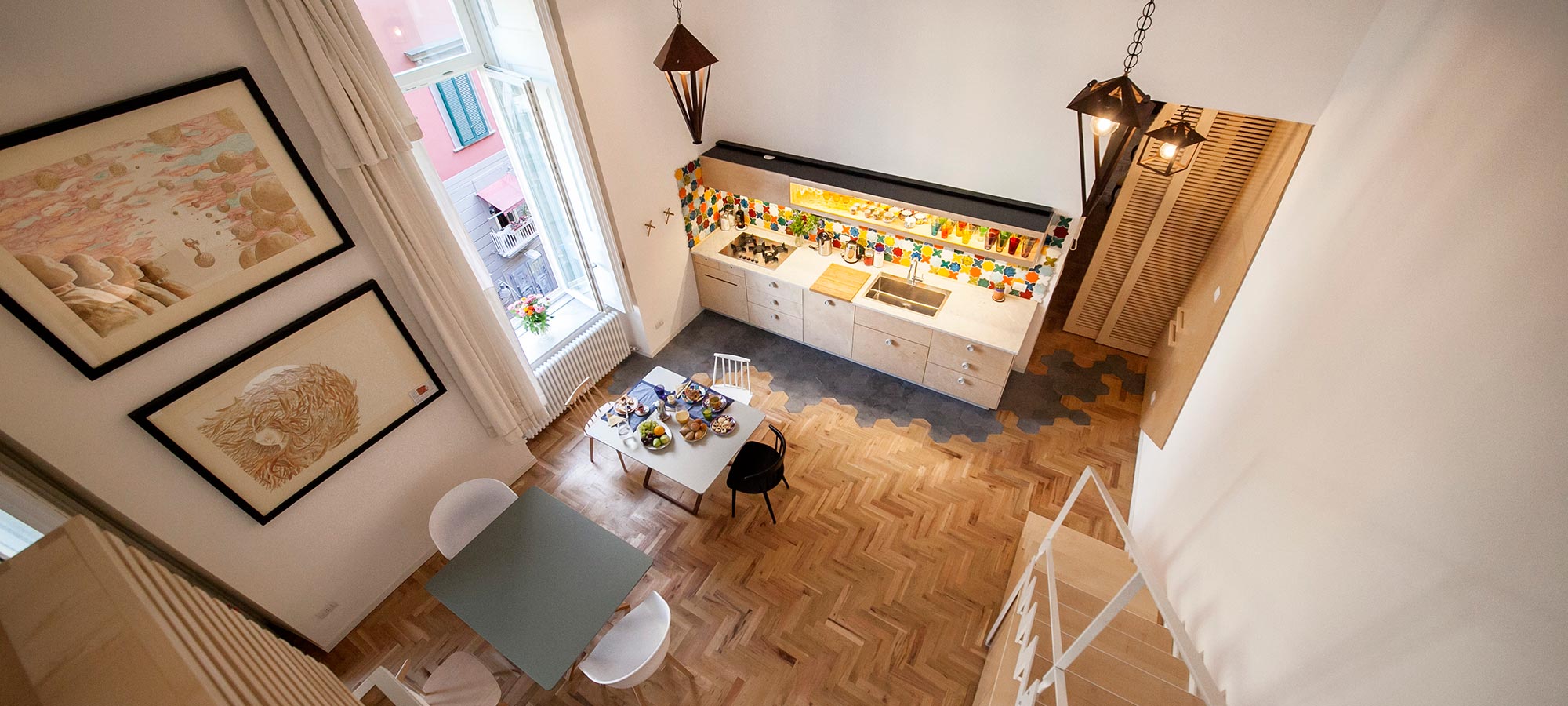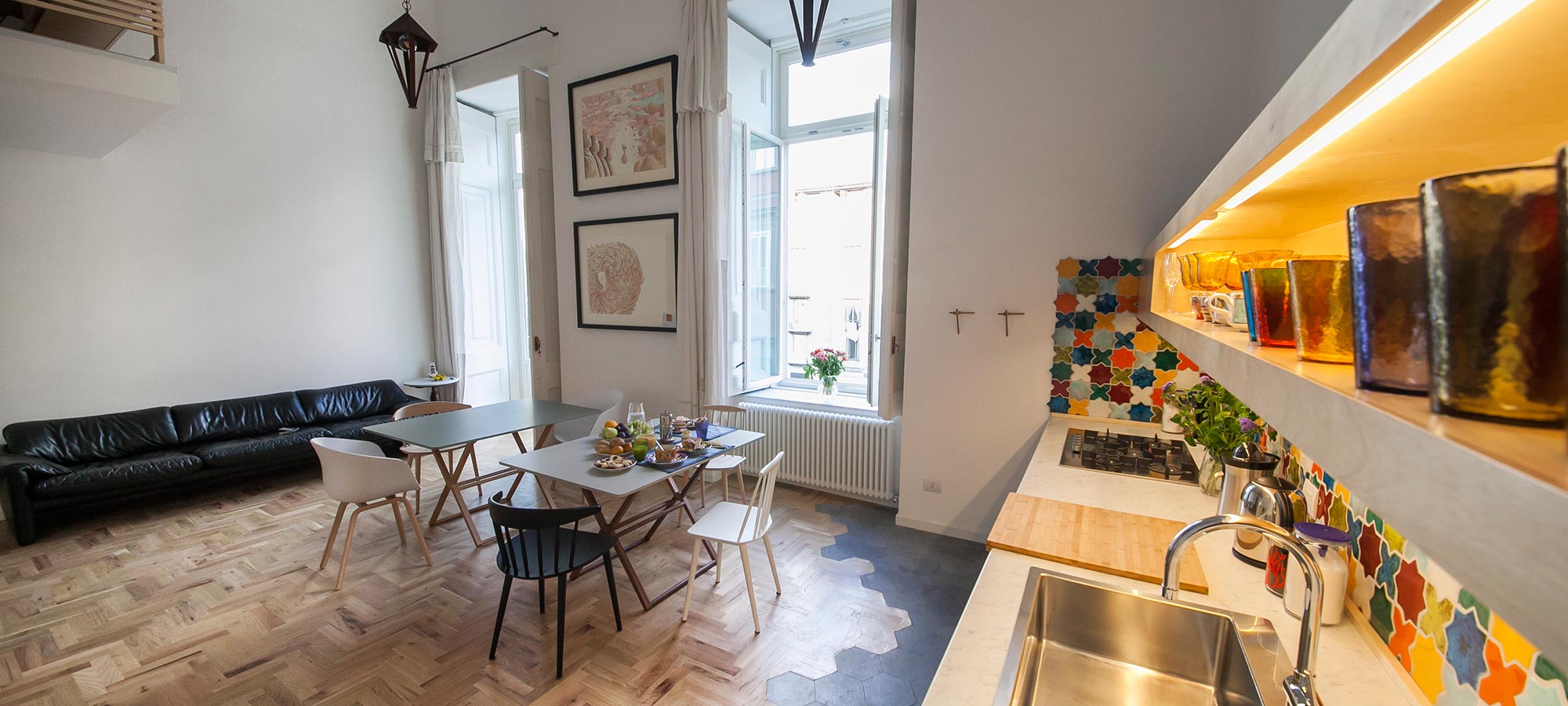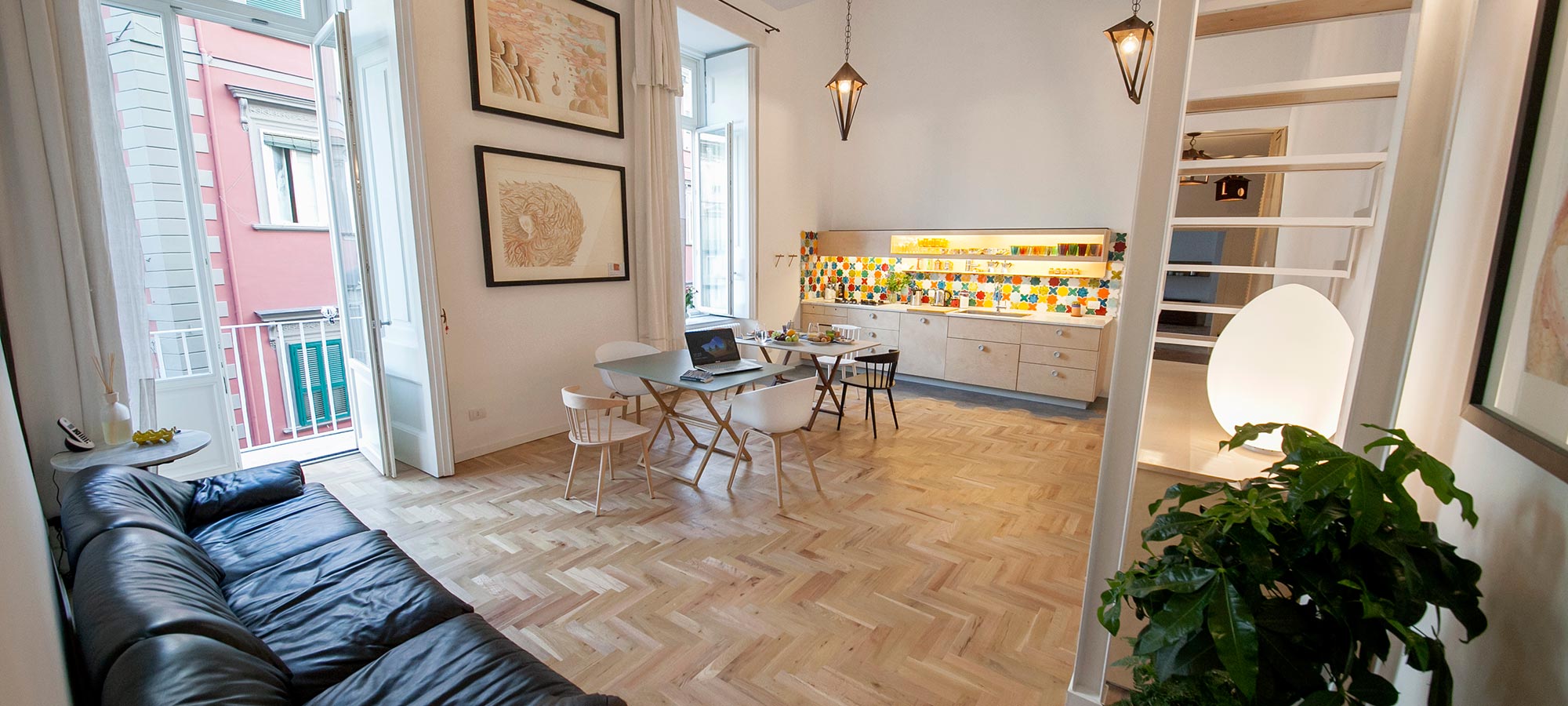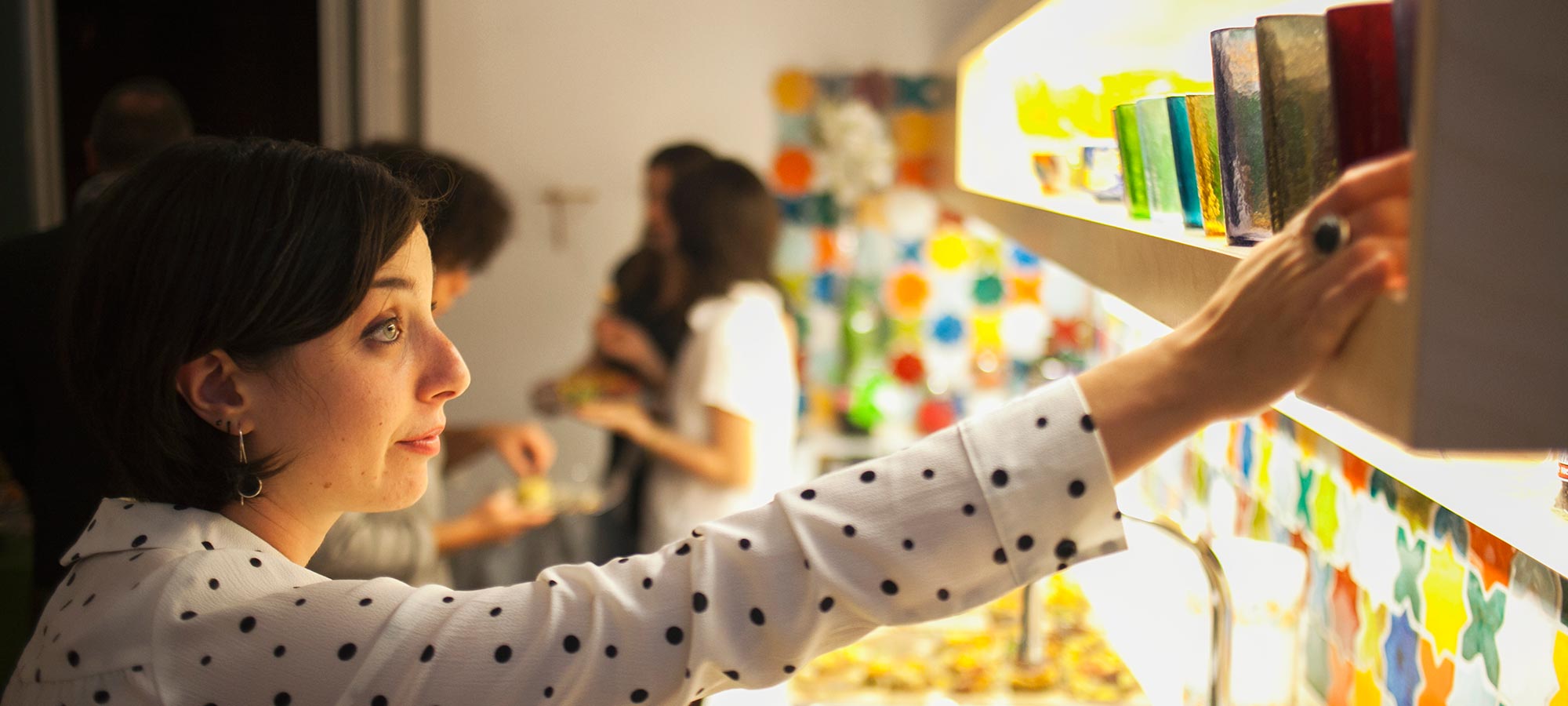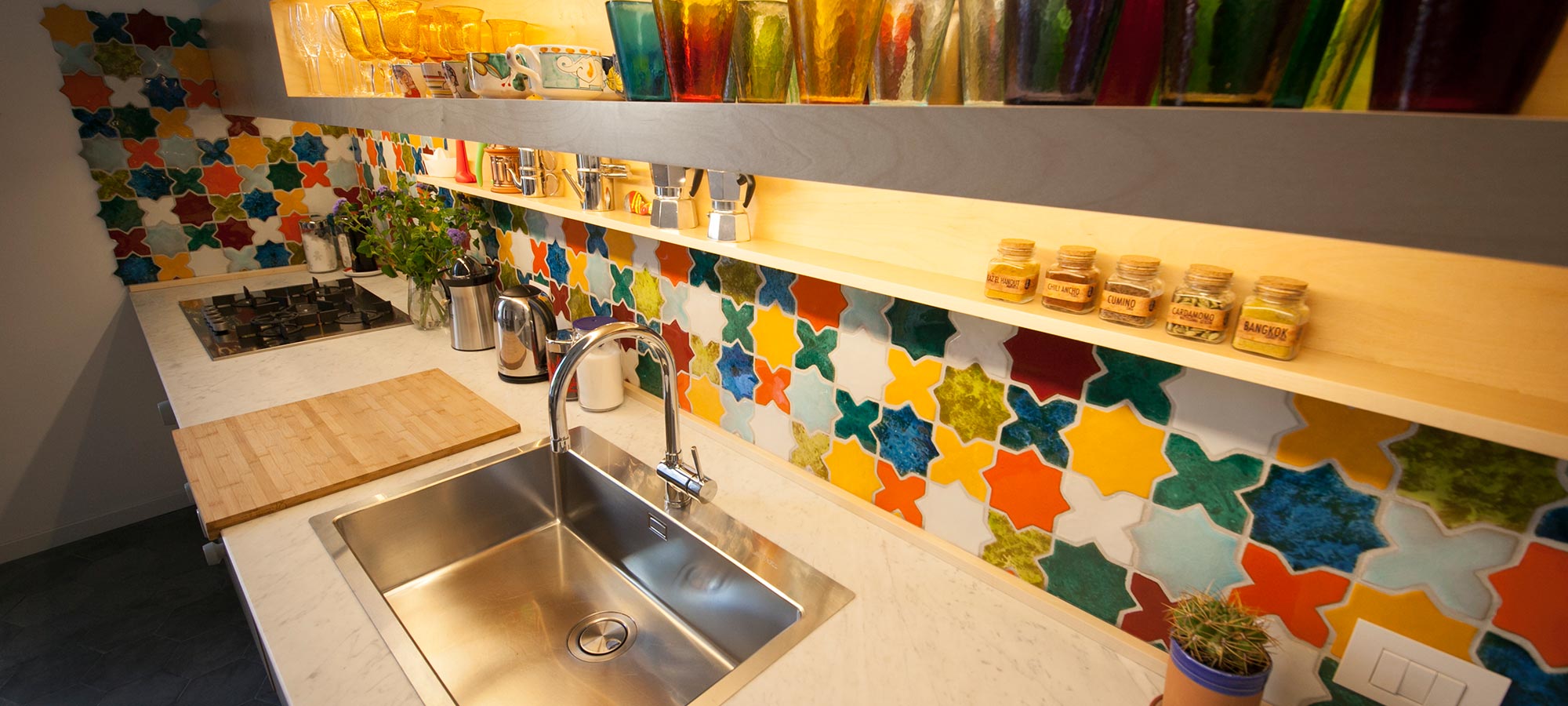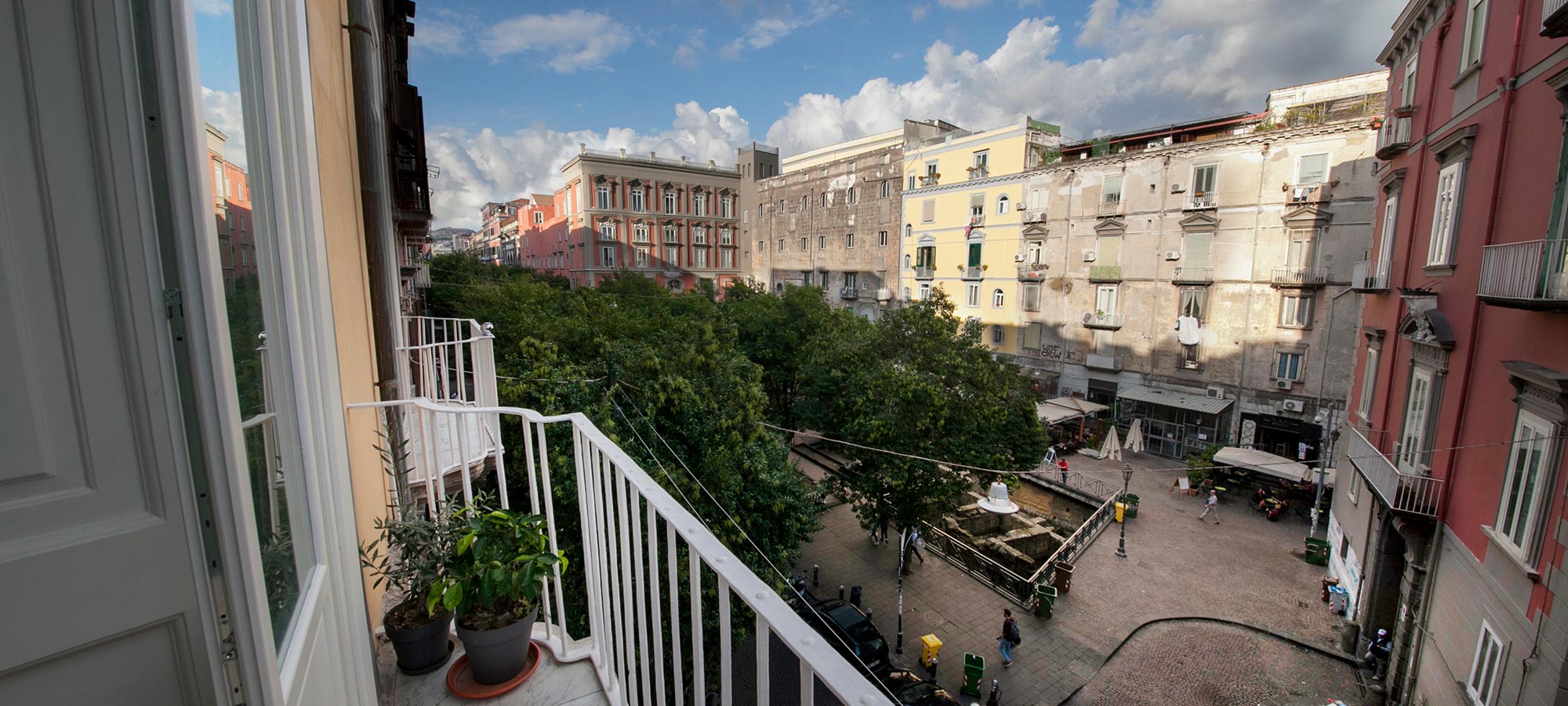Our home
OVO was born out of the dream of living in a house where friends are hosted, and smiles, lives and languages are learned; from the desire to bring to Napoli thousands of new eyes that may multiply its wonders.
We fell in love with the high ceilings and large balconies that overlook the archaeological excavations of the ancient Greek walls, with a square full of trees and music, with the view of the green Capodimonte hill topped by its Palace.
We wanted at home what we like about Napoli and we got it, thanks to craftsmen who love and reinvent tradition.
So, our house is illuminated by the same lamps that you will find in Rua Catalana, the street of Neapolitan blacksmiths, designed by the imaginative architect Riccardo Dalisi. Ciro Pepe, our artist blacksmith, forged over twenty large lamps, a huge safety pin, a sword decorated with iron swirls and small sculptures in the balustrades of the stairs.
Alessandro and Gennaro have made the kitchen which celebrates the second “b” of “bed and breakfast”, comfortable solid beds with small side tables, the reception and all the other woodwork. Their working style is phlegmatic, they care and love, whistling as they work, respectful of a Neapolitan cliché.
The Neapolitan terracotta is a local material with a drying time that depends on the weather, a cooking time that exceeds forty-eight hours and a final product of unpredictable color: OVO is happy of its hand-crafted tiles, of which about one thousand arehand-painted to reproduce the ancient decorations found precious cloisters and historic houses.
The large canvas on the couch, the elephant Lele, was designed by architect Massimiliano Lombardi, a great friend.
Luca Davino is a painter, engraver and watercolorist. He is a happy traveler, enthusiastic about Napoli, and has painted for us four dreamy watercolors. Generous and adventurous, he chose OVO as its small permaibition.
At à la Coque’s walls display numbered serigraphs by painter Umberto Leonetti.
Passion for design led to other little things, such as the Maralunga sofa (1973 Vico Magistretti), the Hay chairs (About A Chair, Hee Welling; 1954-1959 Poul M. Volther), the Nessino lamps (1967 Giancarlo Mattioli), the Dalù lamps (1969 Vico Magistretti), the egg lamp (1972, Historical Archive FontanArte), a Neapolitan nineteenth toilet, two Tuscan antique chests.
Everything has been carefully hatched and the name of this place could not have been other than OVO (egg).
OVO because Virgilio, in order to protect the Neapolitans, placed in the dungeons of the ‘Sea Castle’ a magic egg that hid the soul of the city. The fate of the city would depend on the integrity of this egg, kept in a glass jug, enclosed in a metal cage. The legend, perhaps amplified by the Neapolitan love for emphasis, goes that each of the old buildings in the city has its protective egg well hidden. Seduced by the legend, we honour our own secret egg.
Pulcinella, the mask of Naples, was born out of an egg, just like Venus: now Pulcinella sleeps dangling in the OVO.
‘OVO Slow Travel’ because if you share your home with those traveling the time expands and you live on vacation in your city without being homesick.



